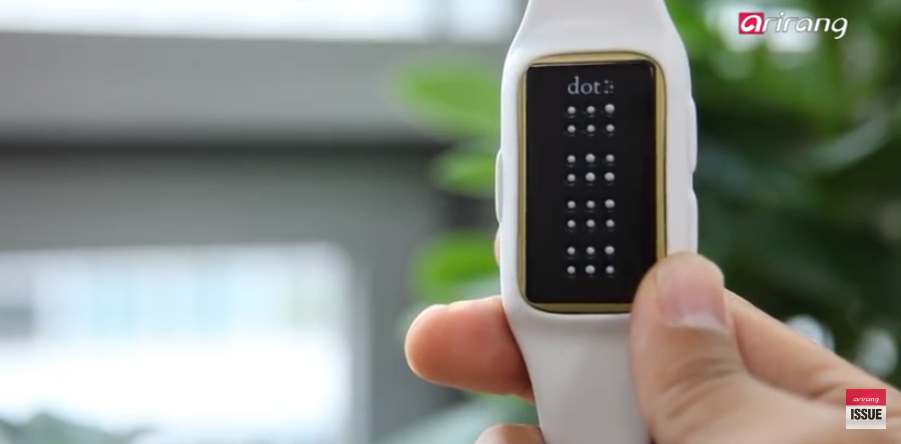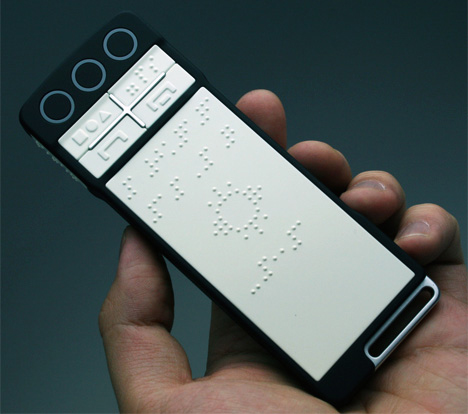AI-Powered Visual Aids: Redefining Support for the Blind
AI-Powered Visual Aids: Redefining Support for the Blind
Blog Article
Discover Ingenious Devices Made for the Aesthetically Impaired
The advancement of cutting-edge tools for the visually damaged stands for a substantial improvement in accessibility and freedom. Technologies such as wise glasses with AI capabilities and mobile applications developed to give auditory descriptions are reshaping daily experiences for users.
Smart Glasses for Navigating

Smart glasses made for navigation are reinventing the means aesthetically damaged individuals interact with their atmosphere. These advanced devices use a mix of cam innovation, synthetic knowledge, and acoustic responses to supply real-time details concerning surroundings. By utilizing obstacle discovery systems, smart glasses can notify customers to possible threats, allowing more secure mobility in both unfamiliar and familiar settings.
The integration of GPS technology further enhances navigation abilities, allowing users to get acoustic directions as they relocate. This hands-free technique not just cultivates self-reliance but additionally empowers visually impaired individuals to browse urban landscapes with enhanced confidence. Furthermore, numerous clever glasses are equipped with attributes that identify spots and street indications, providing contextual information that improves the customer experience.
Furthermore, the development of these tools is continuously advancing, with firms working to improve the accuracy of things acknowledgment and increase the array of navigational attributes. As wise glasses end up being much more easily accessible and cost effective, they hold the potential to considerably change day-to-day live for visually impaired users. Eventually, these ingenious tools stand for a critical action towards inclusivity, offering enhanced mobility and a greater feeling of freedom for people navigating the world around them.

Mobile Application for Daily Living
Just how can mobile applications boost the day-to-days live of aesthetically impaired people? Mobile applications are changing the method aesthetically impaired customers navigate their environments, manage daily jobs, and access info. These applications provide important support with different capabilities, cultivating freedom and boosting quality of life.
Numerous ingenious mobile apps are made particularly for everyday living. Apps like Be My Eyes connect visually damaged customers with sighted volunteers through video calls, allowing them to get real-time assistance with tasks such as reading labels or navigating strange areas. Similarly, Seeing AI, created by Microsoft, uses expert system to explain environments, checked out message, and recognize objects, properly changing a smart device into a powerful tool for daily help.
In addition, navigating apps customized for the aesthetically damaged, such as Aira and BlindSquare, supply audio-based directions and environmental information, enabling users to traverse their surroundings securely and confidently. Beyond navigation and instant aid, mobile applications additionally sustain organization and task administration, with functions that assist customers set reminders, create to-do lists, and track visits. In recap, mobile applications offer as important sources, empowering aesthetically impaired individuals to lead more independent and satisfying lives.
Wearable Technologies for Aid
Empowerment via innovation is increasingly apparent in the realm of wearable devices made to help visually damaged individuals. These ingenious tools integrate flawlessly into life, improving navigating and giving crucial comments to users. Clever glasses geared up with cams can read and recognize faces message aloud, allowing individuals to interact even more with confidence in specialist and social setups.
Another remarkable development is using haptic feedback systems in wearable devices. These systems utilize vibrations or other tactile signals to communicate information concerning the user's setting, such as barriers or adjustments like it in surface, improving mobility and security. Wearable innovations additionally include wristbands that attach to smart devices, alerting individuals to recommended you read alerts with refined vibrations, thus boosting connectivity without reliance on aesthetic signs.
As these innovations proceed to develop, they are not just boosting freedom for aesthetically damaged people but additionally fostering a greater sense of incorporation in society. By linking the space between obstacles faced in everyday living and the capacity for autonomy, wearable innovations act as critical devices in the pursuit for equal rights and empowerment for those with visual disabilities.
Audio Description Devices
Sound description devices play a crucial function in boosting ease of access for visually impaired people, supplying them with the ability to involve with visual media. Mobility aids for visually impaired users. These tools offer narrated descriptions of essential aesthetic aspects in films, tv shows, and live performances, guaranteeing that customers can fully comprehend the context and emotions communicated through visuals
Sound summary can be integrated right into numerous platforms, consisting of streaming services, movie theater screenings, and live theater. Many preferred streaming services now consist of audio summary as an access attribute, allowing customers to select it easily. Along with conventional media, specialized apps likewise exist, giving audio descriptions for art events, galleries, and various other social events.
The efficiency of audio summary rests on the skill of the storytellers, who have to communicate visual information succinctly without interfering with the initial audio. Innovations in this area are also leading the way for more individualized experiences, where customers can adjust the degree of detail and pacing according to their choices.
Braille Innovations and Devices
Braille devices and developments have actually substantially changed the way aesthetically damaged individuals communicate with message and information. Modern advancements have caused the advancement of functional tools that boost proficiency and freedom among individuals. Notably, Braille show technologies have actually advanced, permitting dynamic reading experiences. These devices convert digital message right into Braille, allowing customers to access a large range of details on computer systems, tablets, and smartphones.
Moreover, mobile Braille notetakers integrate traditional Braille input with modern-day performances, assisting in note-taking, organizing, and file modifying on the move. Wearable technology for low vision. These portable gadgets typically feature text-to-speech capacities, connecting the void between Braille and acoustic information
Additionally, ingenious Braille printers have actually emerged, enabling customers to create Braille tags, files, and instructional products successfully. This ease of access promotes higher involvement in academic and specialist environments, inevitably promoting inclusivity.
Moreover, research study right into wise Braille modern technologies proceeds to increase. Instruments that include expert system are being checked out to supply real-time navigation help and contextual info, boosting the user experience in diverse settings. On the whole, these developments show a commitment to equipping aesthetically damaged people via modern technology, ensuring they can easily accessibility and engage with the globe around them.

Conclusion
The innovation of ingenious devices for the aesthetically damaged substantially enhances self-reliance and lifestyle. Smart glasses, mobile applications, wearable technologies, audio summary tools, and Braille advancements collectively empower individuals by supplying vital navigation support, ecological official source recognition, and improved analysis experiences. These innovations not just foster better addition however also advertise freedom in everyday tasks, eventually adding to a more fair and obtainable culture for aesthetically impaired individuals. Proceeded development in this field holds guarantee for more enhancements.
As smart glasses become more easily accessible and budget-friendly, they hold the potential to substantially transform daily life for aesthetically damaged individuals. Mobile applications are transforming the means visually damaged customers browse their settings, handle daily tasks, and access information. Applications like Be My Eyes link aesthetically impaired individuals with sighted volunteers via video clip phone calls, permitting them to get real-time aid with jobs such as reading labels or browsing strange areas.Additionally, navigating applications customized for the aesthetically impaired, such as Aira and BlindSquare, provide audio-based instructions and environmental information, allowing individuals to traverse their surroundings securely and with confidence.The development of innovative devices for the aesthetically damaged considerably boosts independence and quality of life.
Report this page